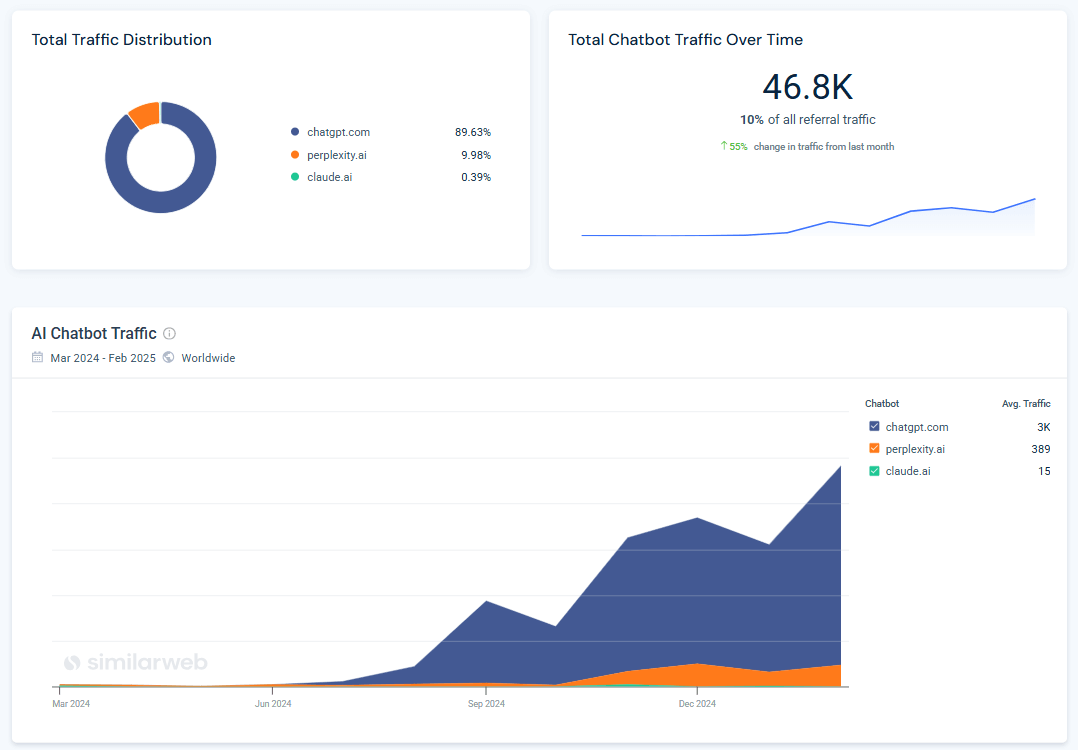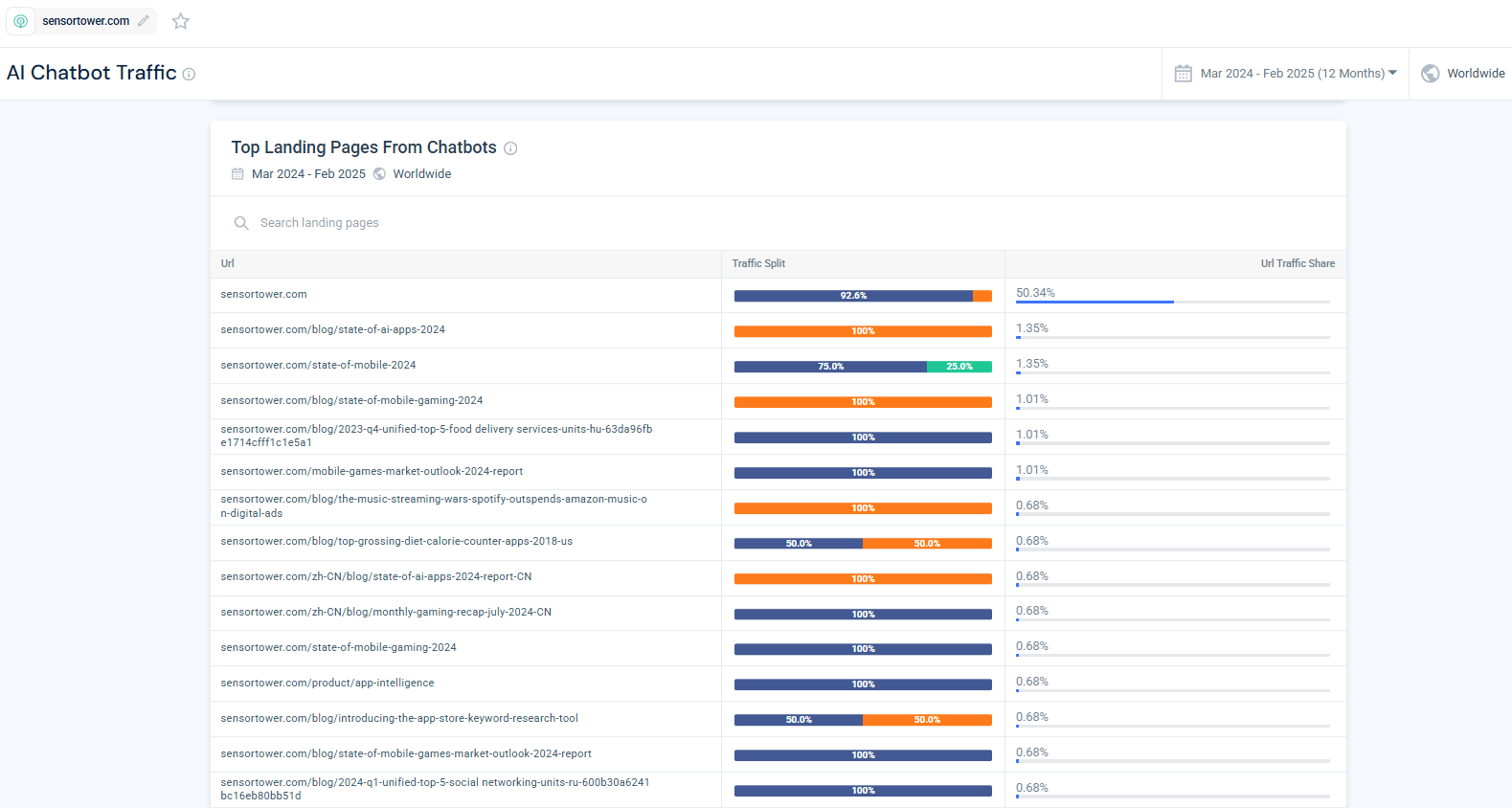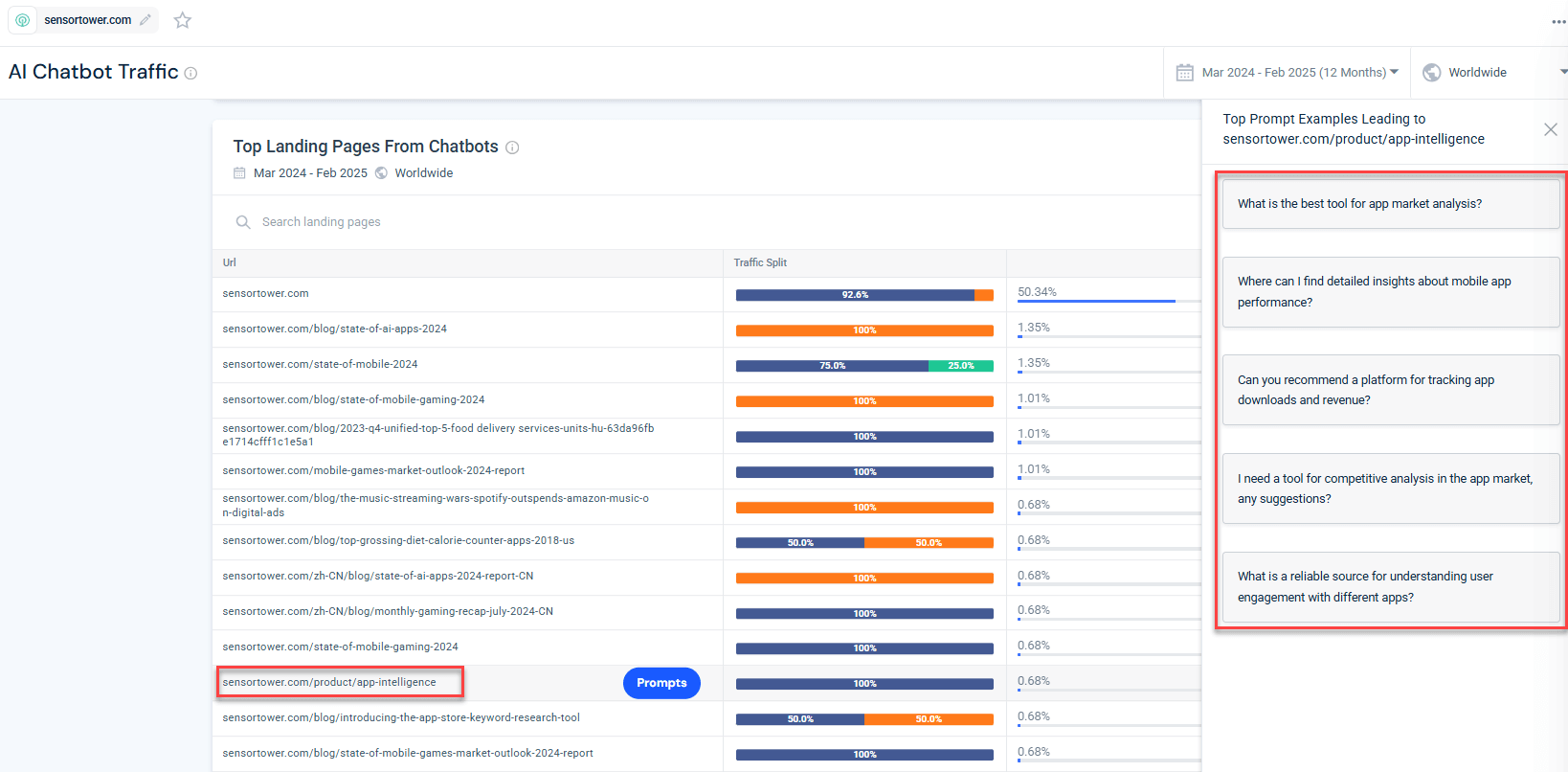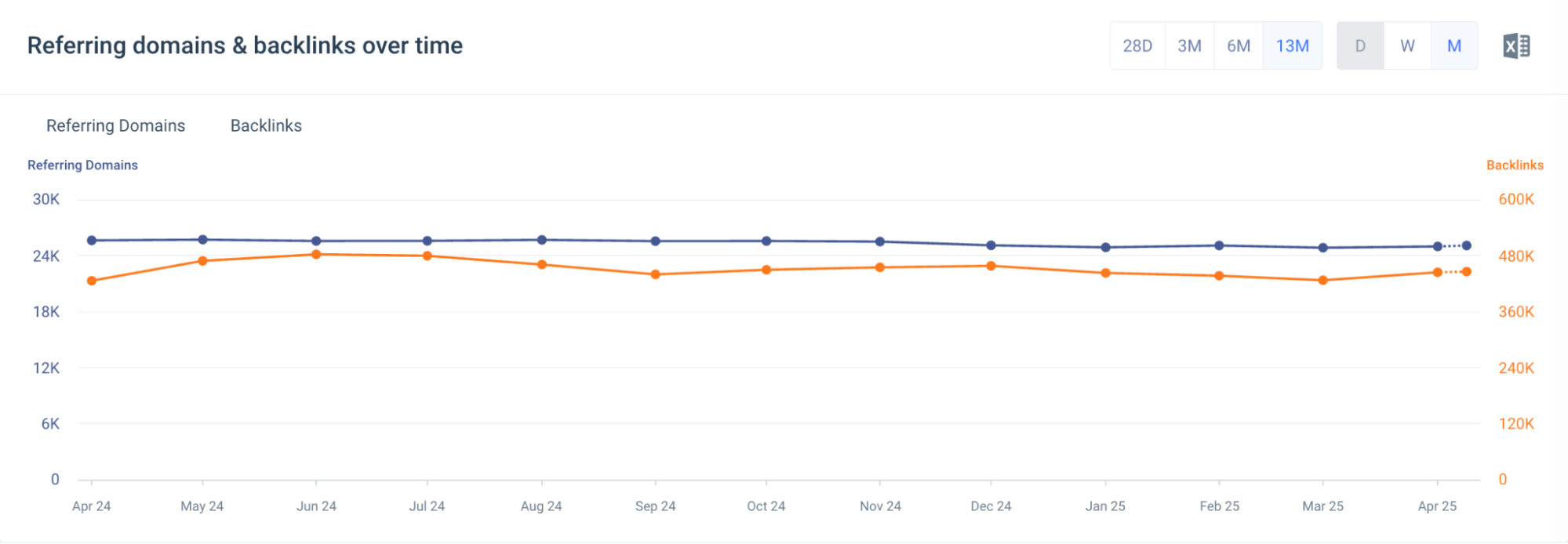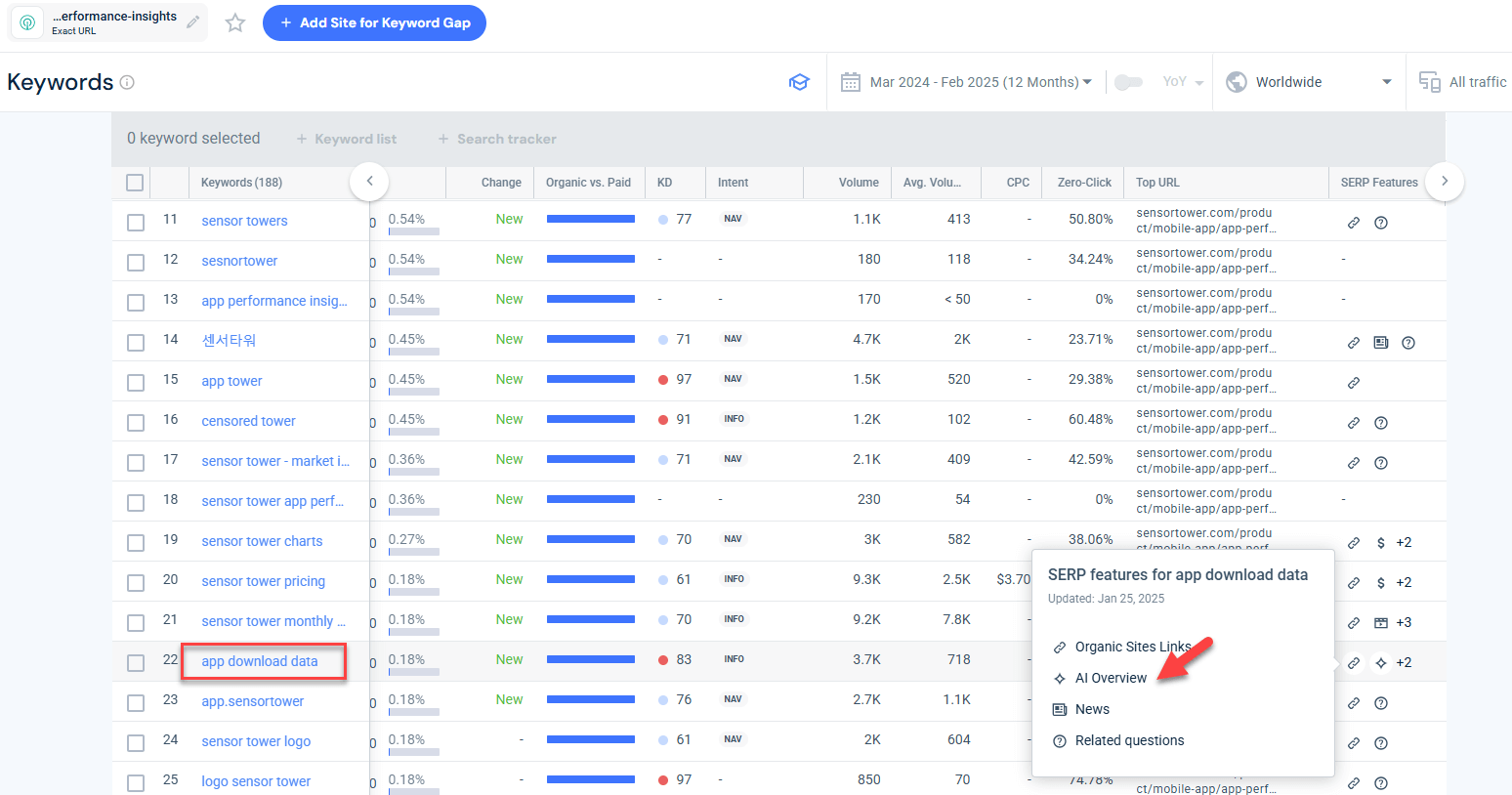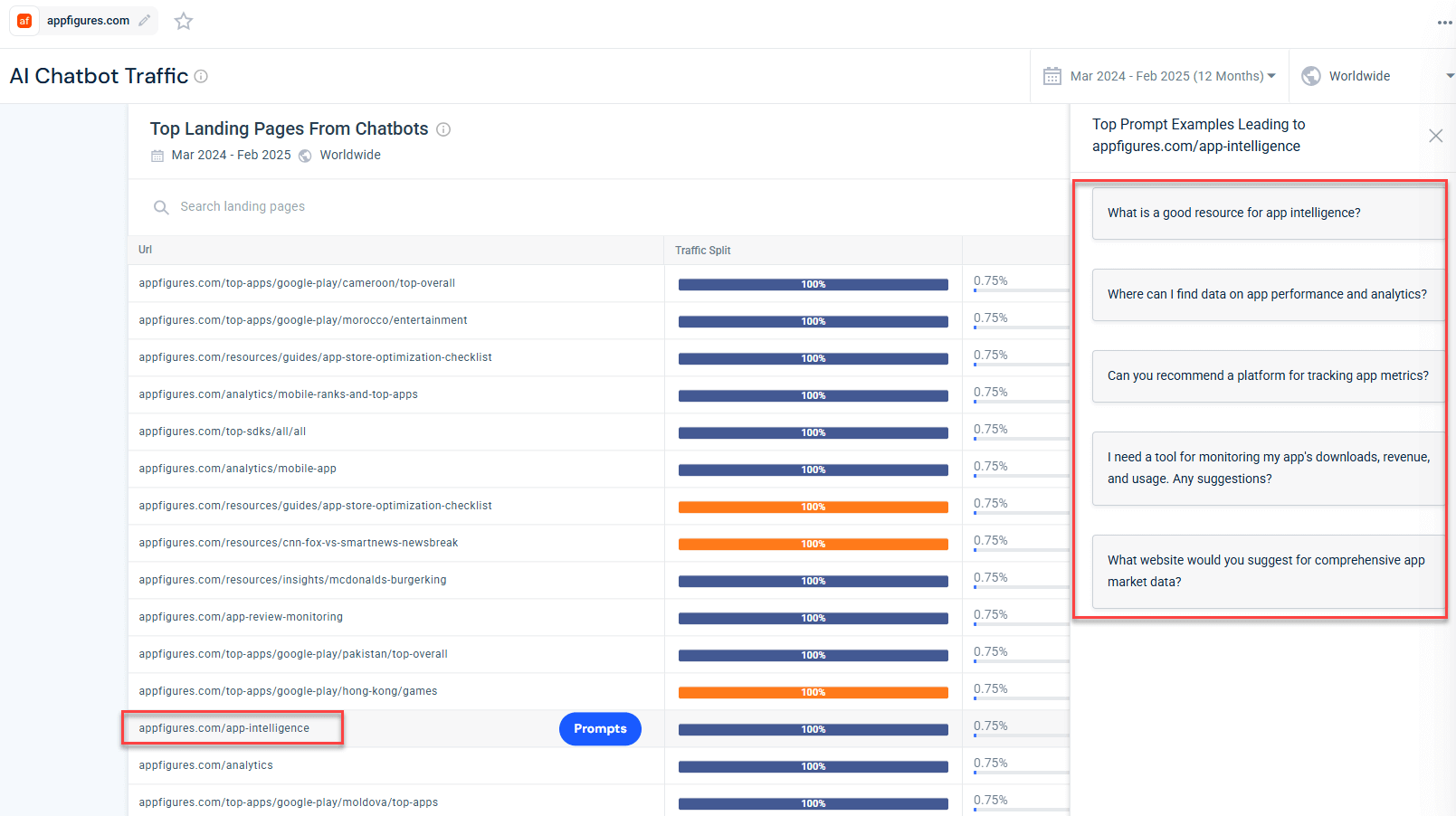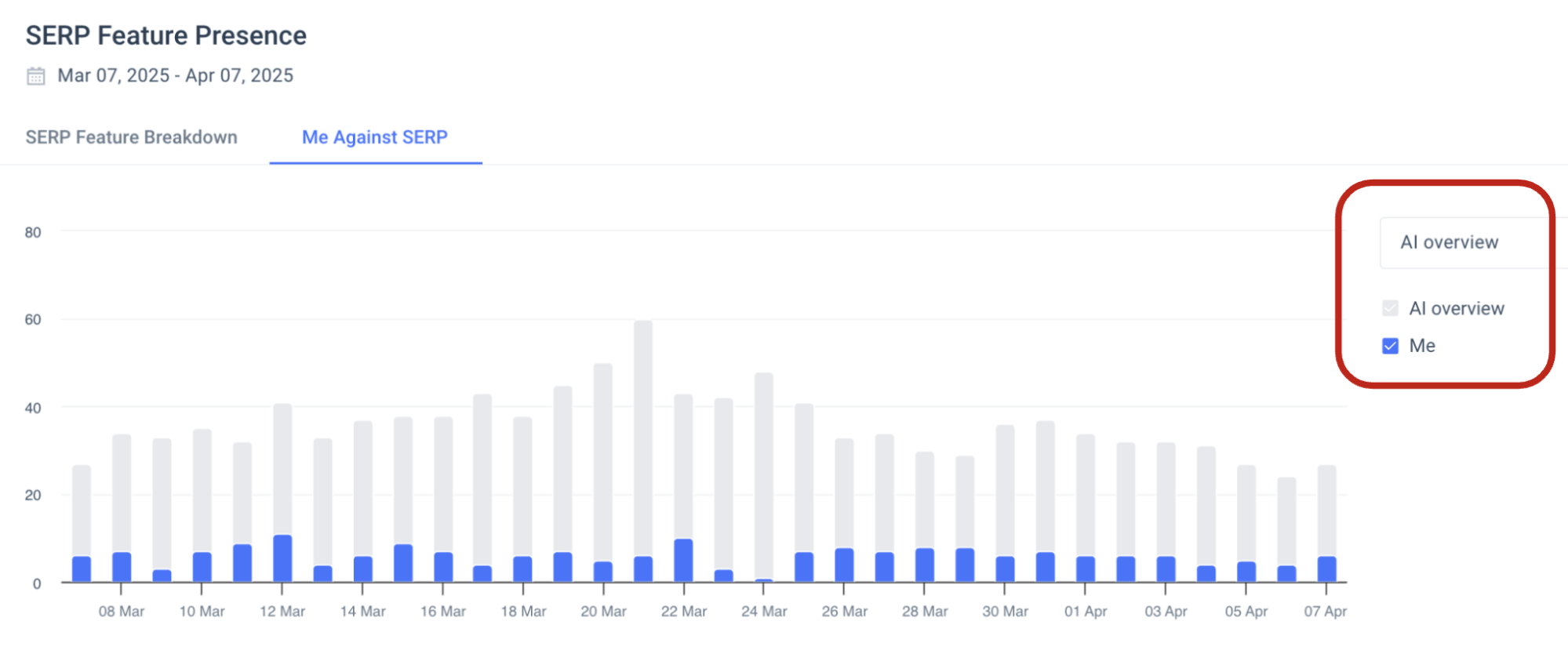Competitive AI Analysis: Reveal Your Competitor’s AI Traffic Sources

You’ve probably heard endless times how AI is transforming the way we search, but have you ever stopped to check the insights this shift can offer?
With AI competitive analysis, you can finally uncover how much traffic your competitors are getting from AI-driven platforms, and why.
Until recently, there simply wasn’t a tool that made this kind of analysis accessible.
That changed with the launch of Similarweb’s AI Chatbot Traffic tool. With it, I saw a new opportunity to explore how AI chatbots impact my market and particularly my main competitors.
In this post, I’ll demonstrate how to do a competitive AI analysis starting with the Chatbot Traffic tool. Since Similarweb purchased 42matters, known for its high-quality data in the App Intelligence space, I wanted to check their market, so I started my research with their direct competitor, SensorTower.
Summarize with ChatGPT | Google AI | Perplexity | Grok
Now, let’s talk about the basics.
What is competitive AI analysis?
Have you ever asked yourself, ‘How much traffic are my competitors getting from AI chatbots?’ or ‘What topics or queries are driving visibility for them in AI-powered search?’
Chances are, the answer is yes, and that’s exactly where competitive AI analysis comes in. It’s about understanding how your competitors are performing within AI-driven platforms, so you can identify opportunities and adapt your own strategy accordingly.
Traditionally, competitive analysis focused on product offerings, positioning, and sales tactics. But with the rise of AI-powered tools and conversational platforms like ChatGPT, Gemini, and Copilot, the landscape is shifting. Businesses are now looking at how these tools are being used, what kind of traffic they drive, and how users engage with them across different markets and industries.
In short, competitive analysis with AI allows you to move beyond traditional competitor research and tap into how modern discovery platforms are influencing buyer behavior.
So, how do you get started?
Let’s dive in.
How to perform a competitive AI analysis?
- Identify competitors’ top landing pages from AI chatbots
- Generate blog content ideas based on competitor prompts
- Build strategic backlinks to support your target pages
- Incorporate AIO keywords into the pages you want to promote
- Optimize for AI Overviews using the best practices
1. Identify competitors’ top landing pages from AI chatbots
To get started, choose a competitor’s domain, and select a time frame and location. I chose SensorTower as said earlier, filtered the data for the past 12 months, and set the location to global. The AI Chatbot Traffic tool provides a breakdown of chatbot traffic distribution.
Since July 2024, we have seen a new trend of visits from chatbots, while ChatGPT leads the chart in terms of traffic:
But the real game-changer is a powerful feature at the bottom of the report: Top Landing Pages From Chatbots.
This section reveals which competitor pages received the most traffic from AI chatbot links. I see that ChatGPT and Perplexity have 100% traffic split on several pages, such as blogs and reports.
From this list, we can identify high-performing content topics and specific prompts that drive chatbot traffic.
One page stood out to me in particular: SensorTower’s App Intelligence product page. As a conversion-focused product page, it presents a valuable opportunity.
2. Generate blog content ideas based on competitor prompts
By clicking on the ‘Prompts’ button within the tool, I was able to see examples of the prompts that led users to this page:
These prompts provide immediate inspiration for new blog post ideas, such as:
- Best app market analysis tools
- How to track your app downloads and rankings
Optimize these pages for SEO based on the best practices for content optimization.
3. Build strategic backlinks to support your target pages
The next step is to strengthen your pages with strategic backlinks. Backlinks remain one of the most powerful signals of authority, and they play a direct role in how search engines and possibly AI systems evaluate the trustworthiness of your content.
Start by analyzing the backlink profiles of your top competitors. Using Similarweb’s Backlink Checker, you can see which domains are linking to their high-performing pages and what types of content tend to attract the most links. Look for patterns. Are they earning links from industry publications, comparison sites, or tool roundups? This insight helps you reverse-engineer a link-building strategy based on what’s already working.
Next, create or refine pages on your site that align with those opportunities. If AI tools are surfacing competitor blog posts or product pages, make sure you have comparable or better content to promote. Then, build a targeted outreach plan. This could include pitching your content to journalists, reaching out to sites that link to your competitors, or collaborating with industry partners for content swaps and co-marketing efforts.
The goal isn’t just to earn any backlink. It’s to earn the kind of authoritative links that signal trust and relevance to AI-driven platforms. When combined with on-page optimization and structured content, these backlinks can significantly improve your chances of being cited in AI-generated results.
4. Incorporate AIO keywords into the pages you want to promote
Next, I took it a step further using Similarweb’s Keyword Research tool. There, I discovered keywords currently appearing in AI Overviews (AIO) on the SERP.
For example, keywords like:
- app download data
- app analytics
Both were marked as appearing in AI Overviews, which signals strong potential for including them in your own product pages.
To validate the pattern, I analyzed another competitor: Appfigures. Their App Intelligence page also ranks for similar prompts:
This suggests a trend: ChatGPT and other AI chatbots might favor pages that already appear as AIO results in search.
5. Optimize for AI Overviews using the best practices
Once you create your new content, it’s important to ensure that it ranks in Google’s AI Overviews. Here are some best practices to increase your chances of ranking in AI Overviews. The goal isn’t just to rank. It’s to position your brand as a trusted source of information that AI systems choose to summarize and cite.
This is where competitive analysis by using AI shines. Once you identify the right keywords and content angles, you can build authority and visibility more strategically.
A. Increase brand visibility
To improve your chances of appearing in Google’s AI Overviews (AIO), you need to go beyond optimizing individual pages and focus on elevating your brand’s presence across the web. Google’s AI systems are more likely to feature sources they recognize and trust, like brands with consistent, credible signals. Two key ways to build this visibility are through brand entity citations and authoritative backlinks.
- Brand entity citations: Google uses information from across the web to understand and verify brand entities. By ensuring your brand is consistently mentioned alongside key topics, products, or services, you help train AI systems to associate your site with those themes. These citations don’t need to be linked. They can appear in directories, industry lists, review sites, or even news articles. What matters most is that your brand is referenced in semantically relevant contexts with consistent naming.
- Backlinks from reputable sources: Authoritative backlinks remain a cornerstone of visibility, especially in AIO contexts where trust and accuracy are paramount. Google’s AI models are likely to give greater weight to content that’s validated by high-quality sources. Earning links from reputable media outlets, academic institutions, or well-regarded niche sites signals that your brand is a credible contributor to its field. Focus on digital PR, thought leadership, and strategic partnerships to grow your backlink profile in a meaningful way.
B. Strengthen your website’s foundations
Next, focus on strengthening your website’s foundation. Use internal linking to pass site authority between related pages and help search engines understand your content structure. Add schema markup to key pages to make them easier for AI systems to interpret. This includes FAQ schema, How-To markup, and other structured data types relevant to your content. When combined with strong backlink signals, these technical enhancements help boost your site’s eligibility for AIO placements.
C. Discover and track AI overviews keywords
To stay ahead, you also need visibility into which keywords are triggering AI Overviews. Similarweb’s Rank Tracker lets you monitor keyword performance specifically within AIO panels, not just regular search rankings. This daily tracking helps you spot trends and optimize your content around the queries that matter most.
Competitive AI analysis: Your next strategic advantage
AI is already reshaping how users discover information and how your competitors are found. By analyzing chatbot traffic, tracking AIO keyword performance, and building authority through backlinks, you can stay ahead of the curve. If you’re serious about understanding how your competitors are performing in AI-driven environments, there’s no better place to start than with Similarweb’s data and competitor analysis tools.
FAQs
What is competitive AI analysis?
Competitive AI analysis is the process of tracking how your competitors perform across AI-powered platforms like ChatGPT and Perplexity. It reveals which pages and topics are driving visibility and traffic from these sources.
Why should I care about traffic from AI chatbots?
AI chatbots are influencing buyer journeys and driving qualified traffic to brands without users ever visiting a traditional search engine. Understanding where your competitors are being mentioned helps you stay visible where decisions are happening.
How can I see which pages are getting traffic from chatbots?
Tools like Similarweb’s AI Chatbot Traffic report show which competitor landing pages receive traffic from chatbots like ChatGPT and Perplexity. This data gives you a window into what content AI tools are recommending.
What’s the best way to start competitive AI analysis?
Start by selecting a key competitor and using Similarweb to analyze their AI-driven traffic, top chatbot-linked pages, and AIO keyword performance. Then, use those insights to refine your own content and SEO strategy.
Track Gen-AI And Organic KPI's On The #1 SEO Platform
Give it a try or talk to our marketing team - it’s free!





